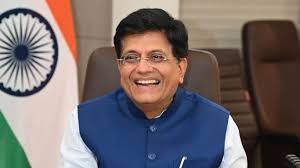
India and US Advance Toward Mutually Beneficial Trade Deal: Piyush Goyal

 :
| Updated On: 23-May-2025 @ 1:57 pm
:
| Updated On: 23-May-2025 @ 1:57 pmSHARE
India and the United States are making meaningful strides toward finalizing a mutually beneficial Bilateral Trade Agreement (BTA), as emphasized by India’s Union Commerce and Industry Minister, Piyush Goyal. His statement comes amid ongoing negotiations with US Commerce Secretary Howard Lutnick. The two sides are currently focused on completing the first tranche of the agreement, which aims to lower tariffs and enhance economic cooperation ahead of the agreed timeline of fall 2025. The terms of reference for the BTA have already been finalized, indicating significant preparatory work has been completed.
Minister Goyal noted that India presents a compelling case for a trade deal with the US, especially given the country’s promising long-term economic growth and demographic advantages. India has a large, aspirational, and youthful population that is expected to significantly boost demand for goods and services over the next 25 to 30 years. This dynamic, he argues, positions India as an attractive trade partner for the United States. Goyal described his meeting with Secretary Lutnick as "constructive" and reiterated that both nations are "committed to enhancing opportunities for our businesses and people."
This latest development builds on earlier assertions by Minister Goyal that "very good negotiations" are underway with the US. He has consistently maintained that the economic trajectory of India provides a strong foundation for a comprehensive and balanced trade deal. With the groundwork being laid, the BTA is expected to bring substantial benefits, including tariff reductions that could significantly boost bilateral trade volumes.
The potential trade agreement is part of a broader ambition to deepen economic ties between the world’s two largest democracies. During a recent visit to Washington, DC, Indian Prime Minister Narendra Modi and US President Donald Trump outlined an ambitious goal of achieving $500 billion in bilateral trade by 2030. This target underscores the scale of economic engagement both countries are aiming for, and the urgency behind current negotiations.
Despite these advancements, US President Donald Trump has recently indicated that he is in no hurry to finalize the trade deal, even though India reportedly offered to remove all tariffs on American goods. While this suggests a degree of caution or strategic patience on the part of the US, it does not appear to derail the ongoing efforts toward finalizing the first tranche of the BTA.
In summary, the India-US bilateral trade relationship is on a promising trajectory, marked by strong political will and a clear focus on mutual economic gains. The BTA represents a strategic move to not only reduce tariffs but also strengthen overall economic cooperation in a way that supports long-term growth for both nations. With terms already set and constructive discussions underway, the foundation for an enduring trade partnership is being firmly established.